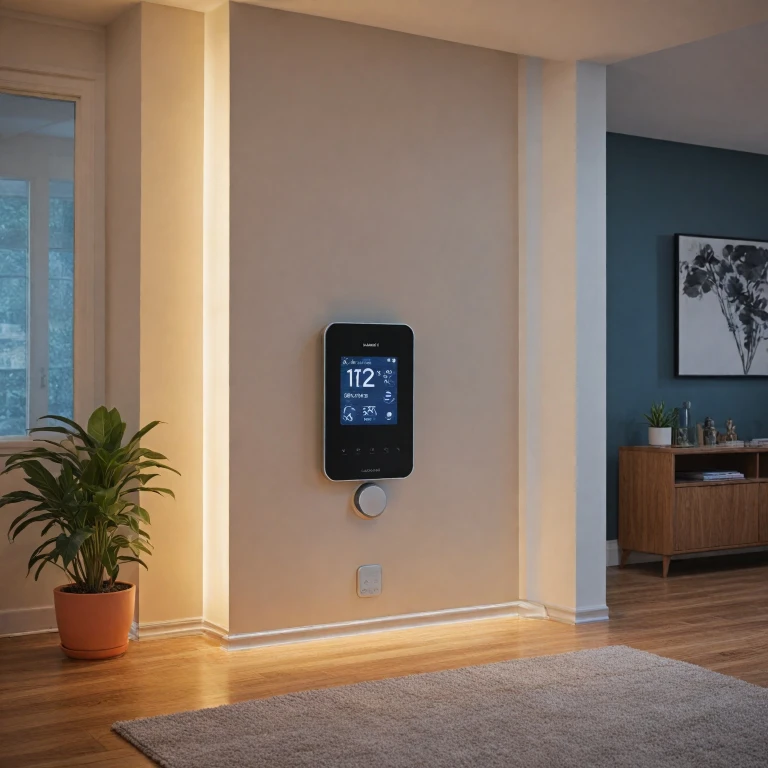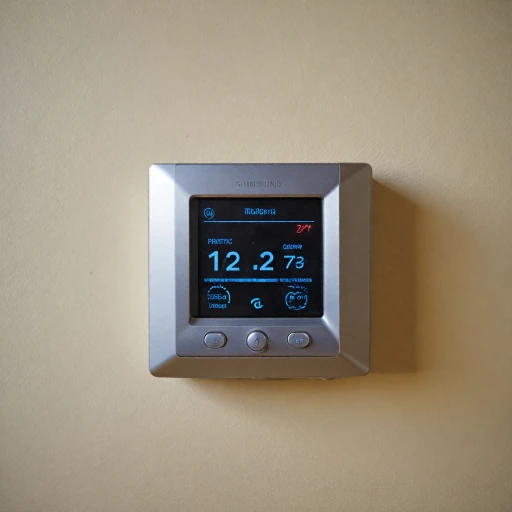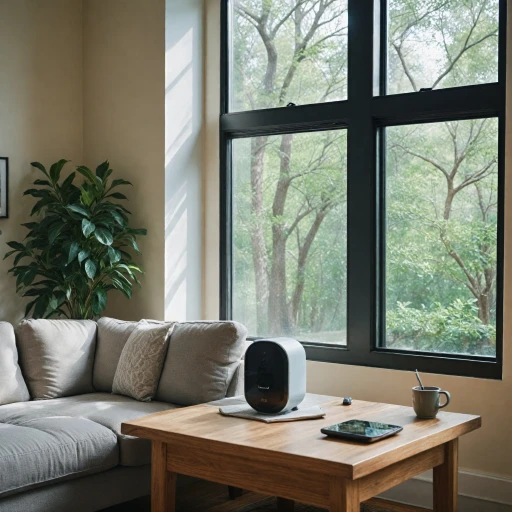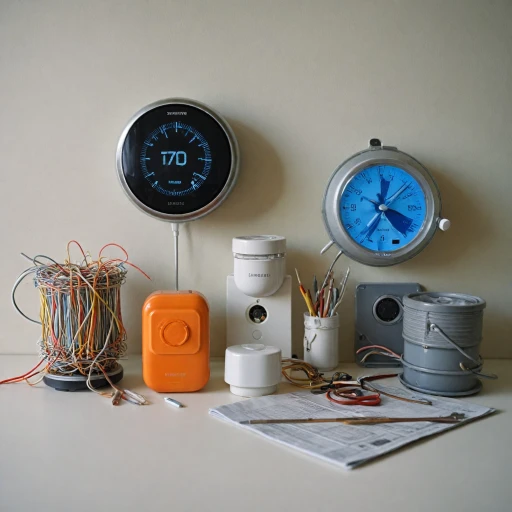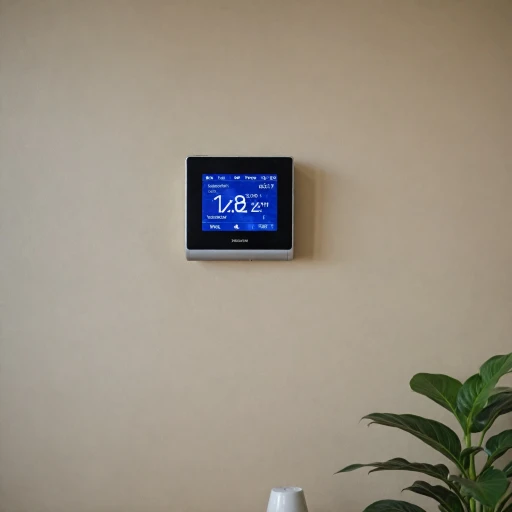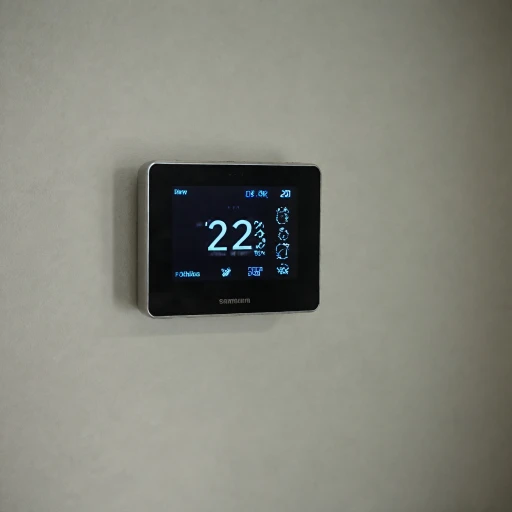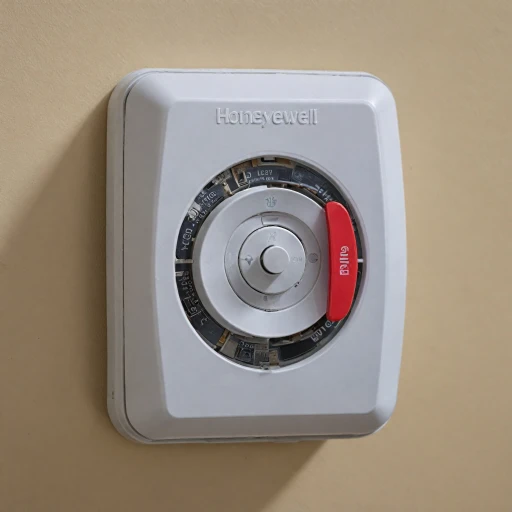
Understanding Presence Sensors
Exploring the Role of Smart Sensors in Home Automation
Have you ever wondered how your smart thermostat knows when you're home? The answer often lies in presence sensors, a pivotal component of advanced home automation systems. These sensors employ various detection methods to understand human presence, contributing significantly to an enhanced smart home experience.
Presence sensors come in several forms, including motion and occupancy sensors. While motion detectors focus on movement, presence sensors are more attuned to a room's occupancy through human presence detection. Advanced technology like mmWave sensors and radar can detect the presence even when individuals are stationary. This precision enables a smart thermostat to adapt the environment dynamically.
Manufacturers like Aqara often integrate multiple sensing technologies such as mmWave and radar into their devices to improve accuracy. As the sensor detects changes in a room, it communicates with the smart thermostat using communication protocols like Zigbee, enabling seamless automation of temperature settings.
The strategic placement of these sensors is crucial. They must be positioned to avoid areas of frequent motion that do not necessarily indicate human presence. By utilizing distinct zones, a smart thermostat can tailor energy usage efficiently across various rooms, ultimately enhancing comfort and convenience.
As smart devices evolve, the role of presence sensors will continue to expand, integrating with popular platforms like Alexa and Google Assistant, further enriching your automation experience. To delve deeper into how presence sensors contribute to energy efficiency, consider exploring the benefits of ecobee thermostat sensors.
Energy Efficiency Benefits
Boosting Energy Efficiency with Presence Sensors
Presence sensors play a pivotal role in enhancing the energy efficiency of smart thermostats. By accurately detecting human presence, these sensors allow for precise control over heating and cooling systems, ensuring that energy is not wasted in unoccupied spaces. This smart motion detection capability is particularly beneficial in large homes or offices where different zones may require varying levels of climate control.
When a presence sensor, such as an Aqara presence sensor, detects movement, it communicates with the thermostat to adjust the temperature settings accordingly. This automation reduces the need for manual adjustments and ensures that the system operates only when needed, significantly lowering energy consumption and, consequently, utility bills.
Moreover, advanced technologies like mmWave radar and motion detection enhance the accuracy of these sensors. They can detect even subtle movements, making them more reliable than traditional motion sensors. This precision is crucial for maintaining comfort without compromising on energy savings.
Integrating presence sensors with smart home systems, such as those compatible with Zigbee or MQTT, further amplifies their efficiency. These systems can communicate with other smart devices, like lights and appliances, to create a comprehensive energy-saving network. For instance, when presence is detected in a room, the thermostat can adjust the temperature while the lights turn on, creating a seamless and energy-efficient environment.
For more insights into how these sensors contribute to energy efficiency, you can explore understanding the Honeywell sensor in smart thermostats.
Enhancing Comfort and Convenience
Optimizing Home Environment for Maximum Comfort
Presence sensors amplify the comfort and convenience provided by smart thermostats by creating a seamless connection between technology and human interactions. These sensors operate on various technologies, such as motion detection and mmwave radar, to identify when individuals are in proximity, thus allowing a smart device to respond promptly.
The integration of technologies like aqara presence detection and multi-person tracking enhances system responsiveness, ensuring that areas are adequately warmed or cooled based on real-time occupancy data. Occupancy sensors can manage varying zones within a home, adapting the temperature to target comfort levels in different rooms based on where human presence is detected.
Smart home assistants, including Alexa and Google, interface with these presence sensors to facilitate automation and provide a tailored environment without manual adjustments. The zigbee mqtt protocol commonly employed ensures robust communication between smart motion devices and thermostats, further streamlining energy management across distance and time.
Moreover, the presence of additional sensors, such as light and motion detectors, allows the device to gauge external factors, like daylight or lack thereof, which impact heating and cooling needs. With power and technology working in concert, homeowners are afforded a responsive climate control system that significantly ups their comfort quotient without compromising energy efficiency.
Integration with Smart Home Systems
Integration into Your Smart Home Ecosystem
Smart thermostats' integration with the broader ecosystem of smart home devices is a critical factor for users seeking a cohesive automation experience. Presence sensors, in particular, play a pivotal role in this interconnected network by facilitating seamless communication and enhancing overall functionality. Utilizing protocols like Zigbee and MQTT, presence sensors such as the Aqara presence detector communicate with central hubs or smart assistants like Alexa and Google Assistant. This integration enables your smart thermostat to respond dynamically to motion detection and occupancy sensors, adjusting temperature settings based on the real-time presence of individuals in specific zones of your home. When a presence is detected within a target distance, the thermostat can either moderate the climate control settings to your preferences or activate other connected devices such as lighting, further optimizing energy consumption and comfort levels. Moreover, these sensors maximize efficiency by distinguishing between different human presence types, such as stationary or moving, using accurate distance measurement and radar technology, including mmWave radar. This sensitivity allows for more precise control inputs, ensuring that non-invasive monitoring and privacy are both respected. Motion sensors, occupancy sensors, and presence detectors together create a responsive system that not only keeps your home comfortable but also reduces energy consumption, ultimately saving you money over time. However, users should be mindful of the associated costs, as some devices can be priced higher due to the advanced technology they deploy. Choosing the right combination of sensors will depend on your unique needs and the existing smart home infrastructure. It's also important to recognize any potential interoperability issues that may arise and address them to ensure every device works harmoniously within the ecosystem.Challenges and Considerations
Addressing Potential Obstacles in Smart Home Integration
The use of presence sensors such as motion sensors, human presence detectors, and occupancy sensors can significantly enhance smart home systems. However, there are several challenges and considerations to take into account.- Integration Complexity: Smart thermostats with presence detection features often require seamless integration with other smart home devices. Compatibility with systems like Zigbee, Zigbee MQTT, and popular assistants such as Alexa and Google Assistant is crucial. However, achieving full integration can be challenging due to varying protocols and standards.
- Coverage Optimization: Effective sensor placement is essential to accurately detect human presence and motion. Limitations in detection range and power, such as those encountered with certain radar and mmwave sensors, may pose restrictions. Devices like Aqara presence sensors are designed for different rooms and target distances, but still require careful configuration to ensure optimal coverage.
- Price Considerations: The cost of incorporating advanced sensors into smart thermostats can deter some consumers. While these devices promise enhanced automation and energy efficiency, the initial investment can vary significantly depending on brand and technology. Consumers must weigh the benefits against the price, especially when considering multi-person detection capabilities.
- False Positives: Light sensors and motion detectors sometimes struggle with false positives, mistaking environmental factors for human motion. Fine-tuning devices to ensure sensors recognize only relevant human presence or motion can improve reliability and reduce unnecessary power usage.
